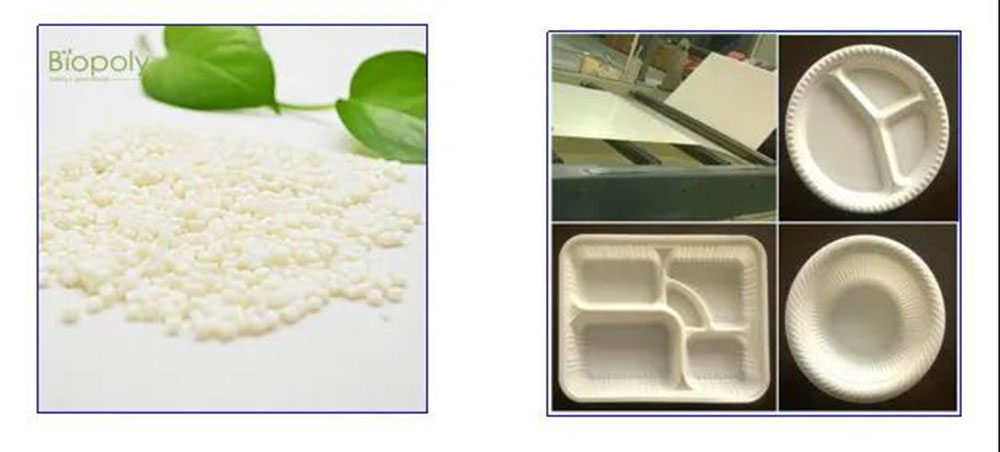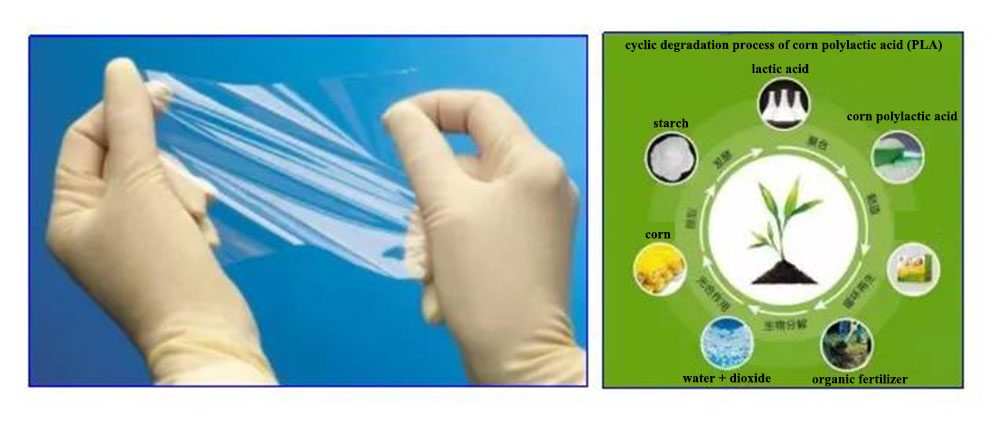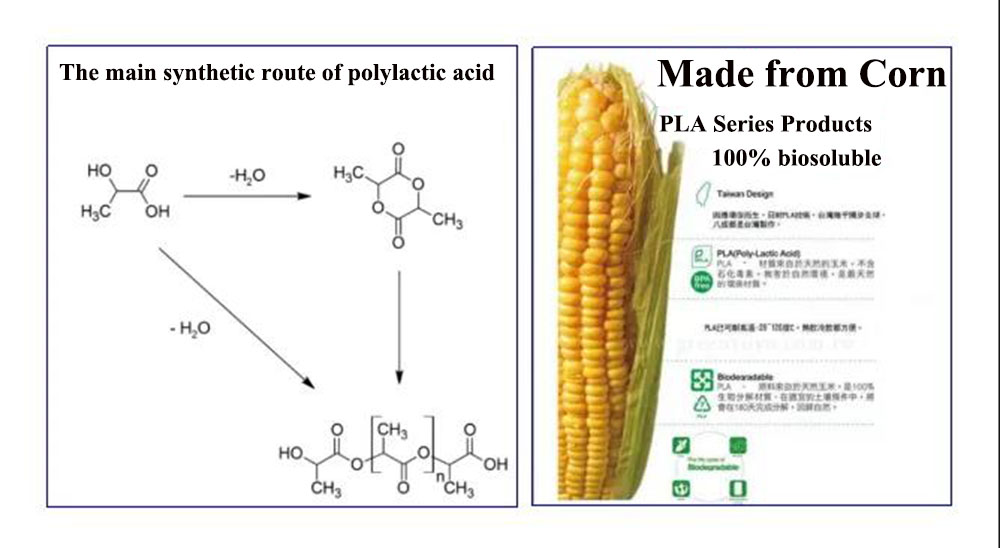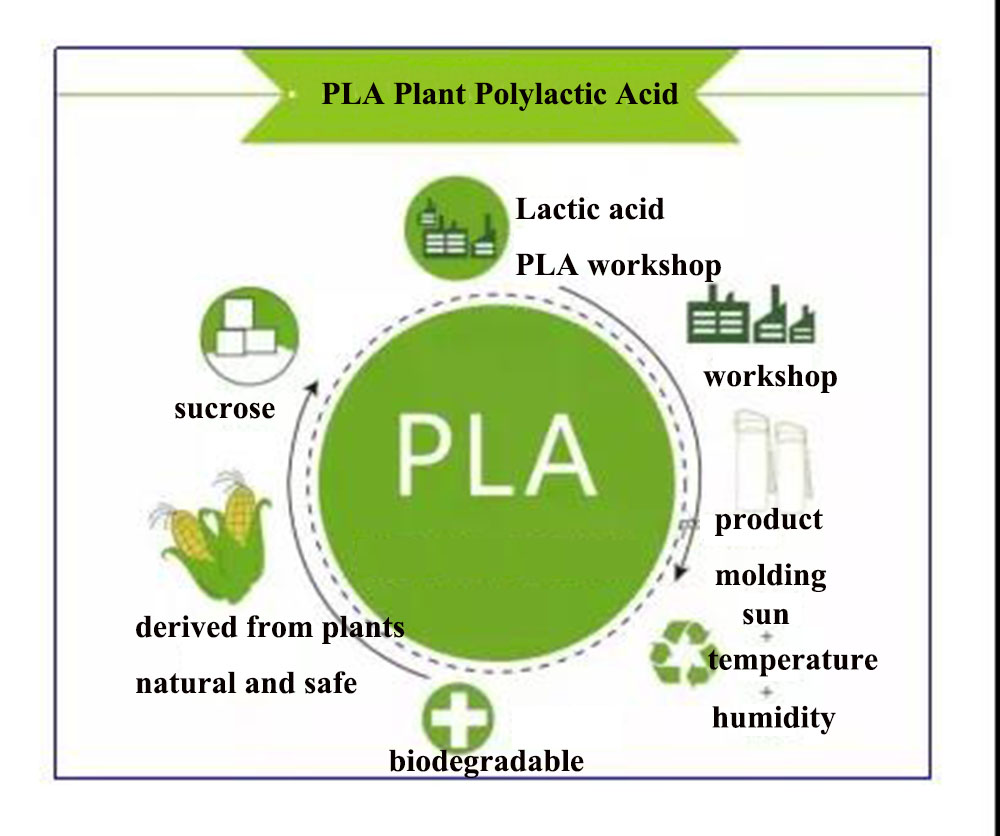Yuanchen Technology Sharing | Polylactic Acid Preparation Process
Jul 16, 2021White pollution is a huge challenge in the process of human society and economic development. Since the 21st century, there has been a global trend of biodegradability, and many countries have issued stricter policies to promote the development of the industry.
In December 2007, the Chinese government issued the "Notice on Restricting the Production and Sale of Plastic Shopping Bags", stipulating that from June 1, 2008, the production, sale, and use of plastic shopping bags with a thickness of less than 0.025 mm will be prohibited nationwide. And a paid use system for plastic shopping bags is implemented.
The Law of the People's Republic of China on the Prevention and Control of Environmental Pollution by Solid Wastes, revised in April 2015, stipulates that the state encourages scientific research and production units to research and produce film coverings and commodity packaging that are easy to recycle, easy to dispose or degrade in the environment; Units and individuals of agricultural film shall take measures such as recycling to prevent or reduce the environmental pollution of agricultural film.
In April 2018, the Party Central Committee and the State Council issued the "Guiding Opinions on Supporting Hainan's Comprehensive Deepening of Reform and Opening-up", which completely prohibited the production, sale and use of disposable non-degradable plastic bags and plastic tableware in Hainan, and accelerated the application of green packaging in the express delivery industry.
In January 2020, the "Opinions on Further Strengthening the Treatment of Plastic Pollution" (hereinafter referred to as the "Plastic Prohibition Order") was issued, requiring the orderly prohibition and restriction of the production, sales and use of certain plastic products, and actively promoting alternative products. "Limited plastic" changed to "Prohibited plastic."
It has become the consensus of more and more national or local governments to restrict or prohibit the use of disposable plastic products through environmental protection legislation, and it will also help promote the sustained, stable and healthy development of the lactic acid and polylactic acid industry. Polylatic acid (PLA), abbreviated as PLA, is a thermoplastic high polymer polymerized from lactic acid produced by biological fermentation as the main raw material. It is also a kind of polyester material. Its production process is pollution-free and has good biocompatibility. And biodegradability, its lactic acid is derived from renewable materials such as corn and wheat, so PLA is an ideal green, renewable and environmentally friendly polymer material.
The production of polylactic acid uses lactic acid as a raw material, and traditional lactic acid fermentation mostly uses starch-based raw materials. At present, the United States, France, Japan and other countries have developed and used agricultural and sideline products as raw materials to ferment to produce lactic acid and then produce polylactic acid.


The production of polylactic acid uses lactic acid as a raw material, and traditional lactic acid fermentation mostly uses starch-based raw materials. At present, the United States, France, Japan and other countries have developed and used agricultural and sideline products as raw materials to ferment to produce lactic acid and then produce polylactic acid.

Production process method
(1) Direct polycondensation method
The polycondensation method is the direct condensation of lactic acid monomers, also known as the one-step polymerization method. In the presence of a dehydrating agent, the hydroxyl and carboxyl groups in the lactic acid molecule are dehydrated by heat and directly polycondensate into oligomers. Add catalyst, continue to heat up, low molecular weight polylactic acid polymerizes into higher molecular weight polylactic acid.
(2) Two-step method
The lactic acid is formed into cyclic dimer lactide, which is then ring-opened and polycondensed into polylactic acid. This technology is relatively mature, and the process used by NatureWorks in the United States to produce polylactic acid is the process. The polylactic acid production technology jointly developed by China's Hisun and the Chinese Academy of Sciences is also similar. The main process is that the raw materials are fermented by microorganisms to produce lactic acid, and then refined, dehydrated, oligomerized, and pyrolyzed, and finally polymerized into polylactic acid.
(3) Preparation of high molecular weight polylactic acid by reactive extrusion
By combining a batch-type stirred reactor and a twin-screw extruder to conduct continuous melt polymerization experiments, polylactic acid with a molecular weight of 150,000 can be obtained from lactic acid through continuous melt polycondensation. A twin-screw extruder is used to further polycondense the low molar mass lactic acid prepolymer on the extruder to prepare a higher molar mass polylactic acid.
When the reaction temperature is 150°C, the amount of catalyst is 0.5%, and the screw speed is 75 r/min, the molar mass of polylactic acid can be quickly and effectively improved by the twin-screw reactive extrusion polycondensation method, and the dispersion coefficient of the reaction extrusion product is reduced. The uniformity becomes better. Through the comparison of DSC curves, it is found that the crystallinity of the polylactic acid prepared by the reactive extrusion polycondensation method is reduced, which is beneficial to improve the brittleness of the polylactic acid material in the use process.
Production process method
(1) Direct polycondensation method
The polycondensation method is the direct condensation of lactic acid monomers, also known as the one-step polymerization method. In the presence of a dehydrating agent, the hydroxyl and carboxyl groups in the lactic acid molecule are dehydrated by heat and directly polycondensate into oligomers. Add catalyst, continue to heat up, low molecular weight polylactic acid polymerizes into higher molecular weight polylactic acid.
(2) Two-step method
The lactic acid is formed into cyclic dimer lactide, which is then ring-opened and polycondensed into polylactic acid. This technology is relatively mature, and the process used by NatureWorks in the United States to produce polylactic acid is the process. The polylactic acid production technology jointly developed by China's Hisun and the Chinese Academy of Sciences is also similar. The main process is that the raw materials are fermented by microorganisms to produce lactic acid, and then refined, dehydrated, oligomerized, and pyrolyzed, and finally polymerized into polylactic acid.
(3) Preparation of high molecular weight polylactic acid by reactive extrusion
By combining a batch-type stirred reactor and a twin-screw extruder to conduct continuous melt polymerization experiments, polylactic acid with a molecular weight of 150,000 can be obtained from lactic acid through continuous melt polycondensation. A twin-screw extruder is used to further polycondense the low molar mass lactic acid prepolymer on the extruder to prepare a higher molar mass polylactic acid.
When the reaction temperature is 150°C, the amount of catalyst is 0.5%, and the screw speed is 75 r/min, the molar mass of polylactic acid can be quickly and effectively improved by the twin-screw reactive extrusion polycondensation method, and the dispersion coefficient of the reaction extrusion product is reduced. The uniformity becomes better. Through the comparison of DSC curves, it is found that the crystallinity of the polylactic acid prepared by the reactive extrusion polycondensation method is reduced, which is beneficial to improve the brittleness of the polylactic acid material in the use process.

PLA production process
(1) Taking materials
After crushing corn and other shell crops, starch is extracted from it, and then the starch is made into unrefined glucose. Many high technologies have overcome the process of crushing and directly extract raw materials from a large number of crops.
(2) Fermentation
Glucose is fermented in a manner similar to the production of beer or alcohol, and after fermentation, glucose becomes lactic acid that is added to human muscle tissue similar to food.
(3) Intermediate products
The lactic acid monomer is transformed into an intermediate product-water-reduced lactic acid, or lactide, through a special concentration process.
(4) Aggregation
After the lactide monomer is vacuum-purified, a dissolution process without solvent is used to complete the ring-opening action to polymerize the monomer.
(5) Polymer modification
Because the molecular weight and crystallinity of the polymer are different, the material characteristics can vary greatly, so PLA is modified differently for different applications.
PLA can be hydrolyzed into lactic acid in the human body, and the final product is non-toxic carbon dioxide and water. Therefore, PLA has become a biodegradable medical material approved by the U.S. Food and Drug Administration (FDA). PLA products can also be used in 3D printing, household daily necessities, etc. field. In the biomedical field, it can be used in drug slow-release systems, medical sutures, artificial dressings, tissue engineering materials, etc.; the 3D printing field mainly refers to 3D high-performance consumables, which promotes the rapid development of 3D printing; it can be used in the field of household daily necessities Packaging wet tissues, non-woven fabrics, space cups, disposable lunch boxes, etc.